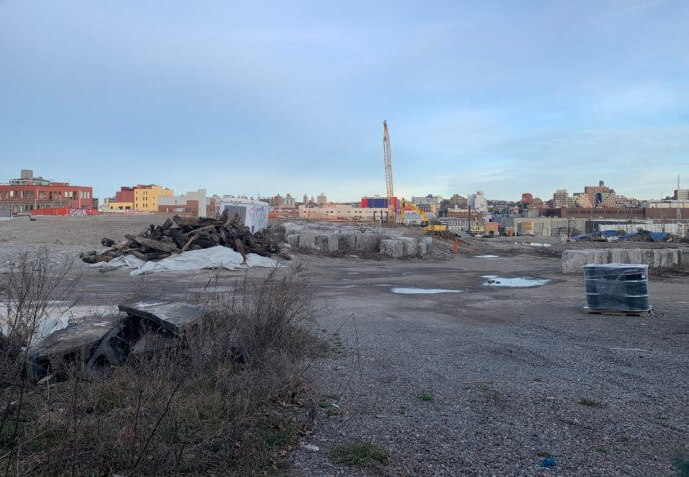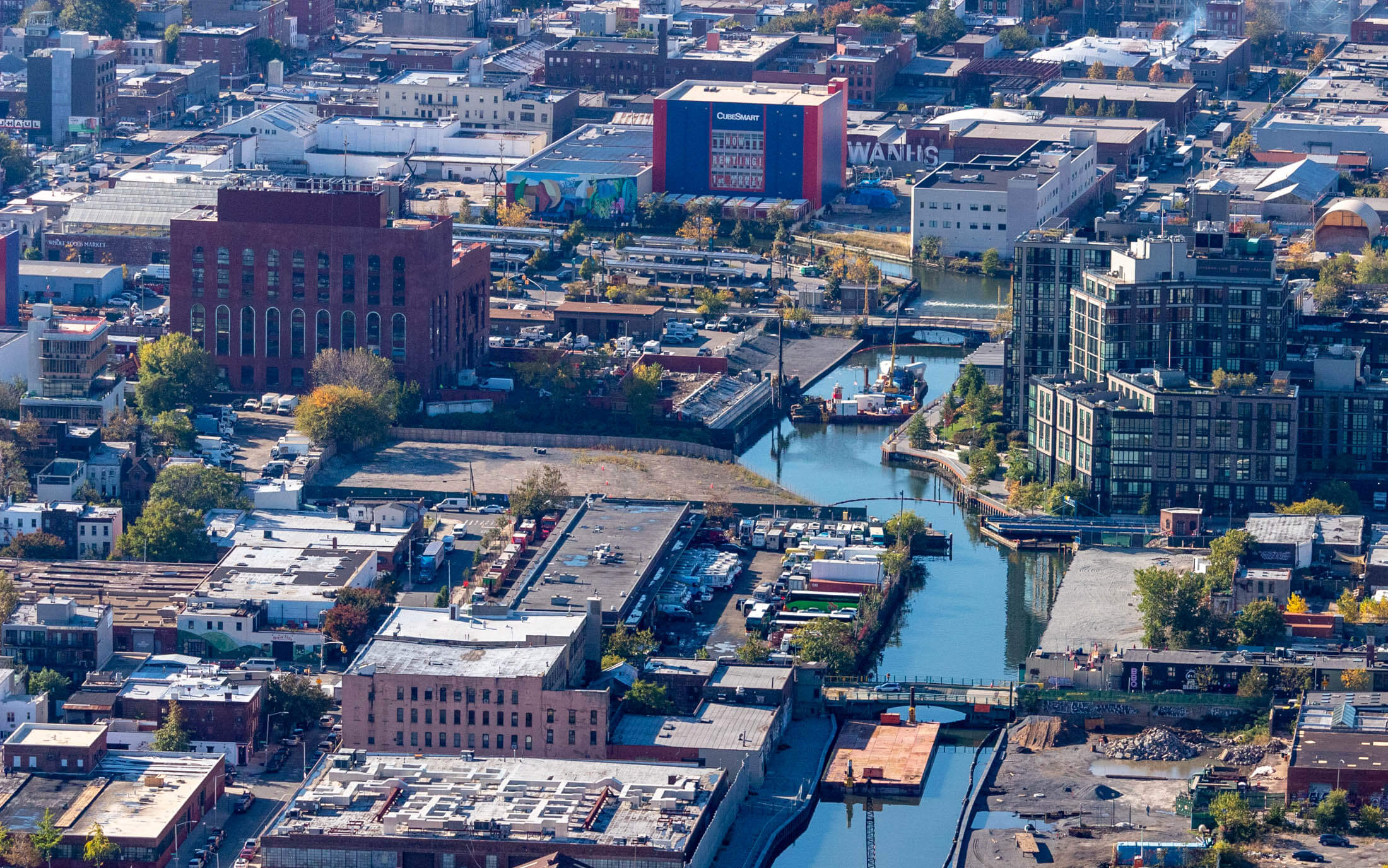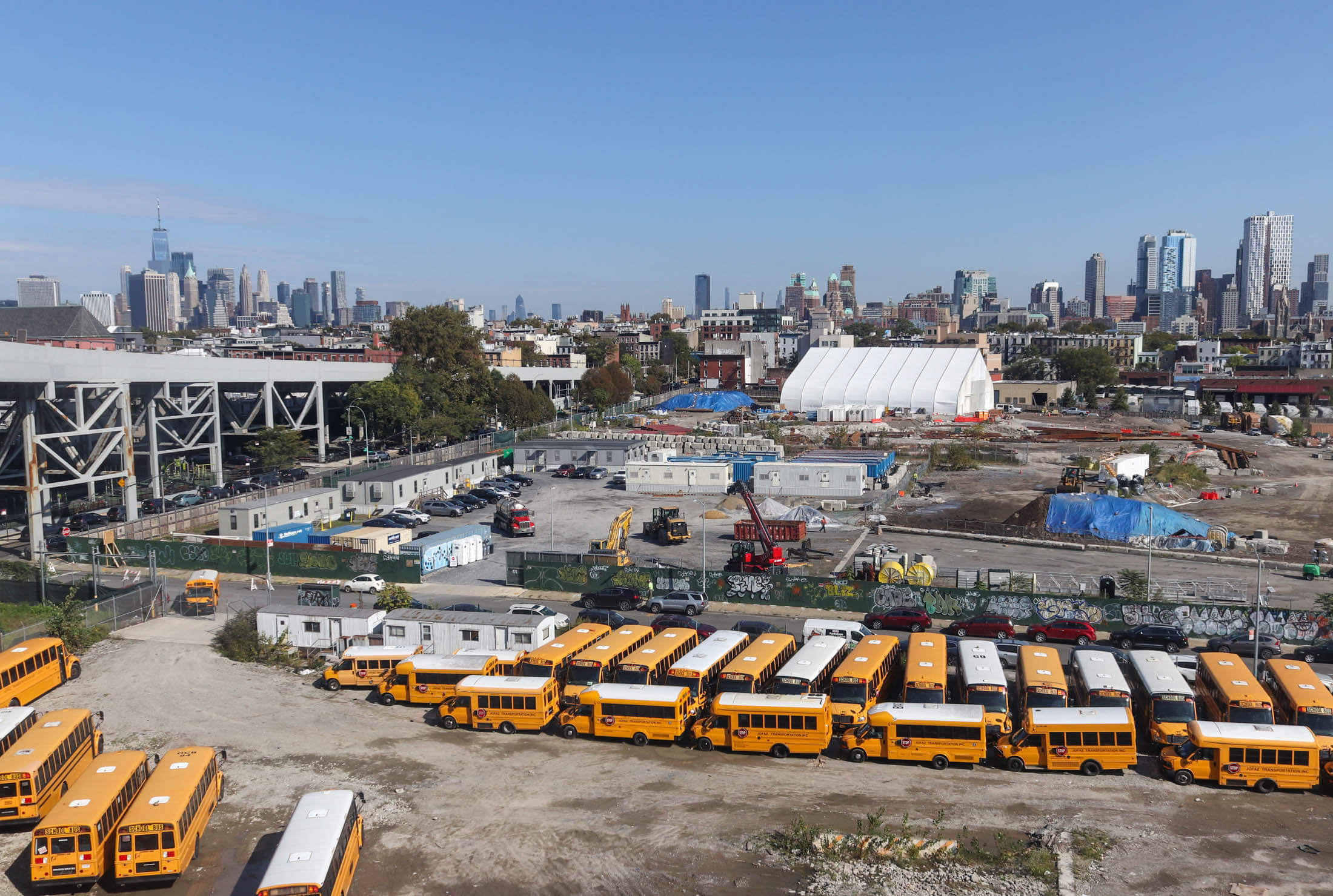Citing Hazardous Unexpected Work, Activists Sue to Stop Construction in Rezoned Gowanus
A community group has filed a motion for a preliminary injunction seeking to temporarily halt any construction related to the Gowanus rezoning after a developer took the community by surprise by driving piles on a heavily polluted brownfield site beside the Gowanus Canal Superfund site.

Gowanus. Photo by Susan De Vries
A community group has filed a motion for a preliminary injunction seeking to temporarily halt any construction related to the Gowanus rezoning after a developer took the community, elected officials, and the Environmental Protection Agency by surprise by driving piles on a heavily-polluted Brownfield site beside the Gowanus Canal Superfund site.
The staunchly anti-rezoning Voice of Gowanus filed the motion by way of its lawyer Richard J. Lippes in Brooklyn Supreme Court on June 8, as part of an ongoing lawsuit against the city and several of the city agencies involved in the rezoning.
That suit seeks to overturn the rezoning in its entirety, accusing the city of skirting environmental law and putting the neighborhood and its citizenry at risk.
The June 8 motion was filed after construction shook the neighborhood at the end of May, as a developer drove piles and poured 100 square feet of concrete on the toxic 459 Smith Street Brownfield site, part of the larger Public Place Brownfield.

Photo by Kirstyn Brendlen
Residents said the construction came without warning and filled the air in the neighborhood with the smell of toxic coal tar, a carcinogenic byproduct of the creation of gas that has been found in large quantities at Public Place.
“Absolutely outrageous”
“This is absolutely outrageous,” said Miranda Sielaff, a VOG member, in a statement. “How is every level of government — city, state, and federal — failing to keep these developers in check?”
Court documents filed by Lippes in support of the motion cite the city’s own assessment that redevelopment of contaminated sites could increase the public’s exposure to hazardous chemicals through contact with the soil or contaminated groundwater.
The documents also refer to the delayed construction of two EPA-mandated water retention tanks, which would prevent contaminated stormwater and sewage from flowing back into the canal during rain events.
While prep work is beginning at both sites, the EPA has repeatedly admonished the city for failing to comply with federal orders, and the tanks are not expected to be finished until years after the Superfund cleanup of the canal is finished.

“It is undisputed that the Gowanus Canal and the upzoned neighborhood are significantly contaminated by CSOs, coal tars … and other hazardous materials,” the documents read. “It is also clear that without limits on construction in the contaminated parcels and without the holding tank construction, exposure to that contamination can only increase.”
If granted, the motion would stop any rezoning-related construction until the original lawsuit has been decided. The court is expected to hold a hearing on the merits of the motion on June 29.
“The city stands by this rezoning which was subject to thorough environmental and land use reviews,” said Nicholas Paolucci, a representative of the city’s law department. “The injunction petitioners seek, which has no basis in law, would unnecessarily delay permanently affordable housing, a cleaner Canal, remediated brownfields, infrastructure investments, new jobs, and increased open space for the Gowanus neighborhood.”
In May, the city moved to dismiss the suit on a legal technicality — even though Lippes filed the petition in court in February, he did not serve it to the city until late April — beyond the four-month statute of limitations for filing a lawsuit against a land use decision.
In court documents, Lippes said he could not serve the papers because a judge had not yet been assigned to the case, and asked that the statute deadline be retroactively extended. The court has not yet made a decision on either request.
Pile driving on Smith Street
459 Smith Street and Public Place are part of the former Citizens Manufactured Gas Plant, where petroleum products were turned into liquified gas for cooking and heating for about a century. The plant was closed in the 1960s, and was owned from 1895 by Brooklyn Union Gas, which was later purchased by British utility company National Grid.
A hundred years of creating gas has left the soil and groundwater at the former plant chock full of hazardous chemicals including coal tar, which can seep into adjacent plots of land and even into the Gowanus Canal itself.

The city’s Office of Environmental Remediation gave the Department of Buildings the go-ahead to approve the construction permits as the developer sought to begin work ahead of the June 15 expiration of 421-a, which grants tax breaks to companies who build on vacant lots.
Representatives of the federal Environmental Protection Agency, who are overseeing the Superfund cleanup of the Gowanus Canal and the related Brownfield cleanups, said at a public meeting last month that they had not been informed of the construction ahead of time and did not have the authority to halt the work.
“That was a big, capital B-I-G, surprise to me,” said Gowanus Superfund remedial project manager Christos Tsiamis, at the meeting. “We were really upset by the fact that we were not notified.”
According to the state’s Department of Environmental Conservation, the state-approved cleanup at Public Place and 459 Smith Street, which is being overseen primarily by National Grid, is “substantially complete,” with 80,000 tons of contaminated soil and 48,000 gallons of coal tar removed from the site and new coal tar recovery wells installed.
But the state’s parameters have been called into question by the EPA, who said earlier this year that the cleanup planned for Public Place was not up to federal standards and could leave contamination behind.
“This was never about doing good things for the neighborhood, this was always about securing subsidies for developers,” said Maureen Koetz, Lippes’ co-counsel. “It’s more than a little disheartening to realize how much has been allowed to go.”
Asking the EPA to investigate
In May, Voice of Gowanus sent a letter to the EPA’s Inspector General requesting an investigation be opened regarding the rezoning and what they say is the EPA’s failure to enforce federal environmental regulations and penalize the city and other bodies for not complying with orders.
The organization also criticized the EPA for not including Public Place and two other former manufactured gas plants in the Superfund designation, choosing instead to allow them to be remedied by the state.
On June 14, Voice of Gowanus sent a follow-up letter to the IG, requesting a response and requesting that the agency expand their investigation to include “…actions by EPA Region 2 that are approaching willful blindness to State and Municipal actions to minimize or avoid needed cleanup actions,” and more.
In response to request for comment by Brooklyn Paper, the IG’s office said it is against policy to acknowledge letters unless they are made publicly available by the party who sent the letter, and could not confirm or deny whether the office had received the letters.
Editor’s note: A version of this story originally ran in Brooklyn Paper. Click here to see the original story.
Related Stories
- Unexpected Pile Driving on Site Along Gowanus Canal Leaves Officials Scrambling for Answers
- Long Blighted, Newly Revamped Batcave Gets Ready for Debut as Gowanus Arts Center
- Gowanus Canal Cleanup ‘Inadequate’ Until City Finishes Delayed Retention Tanks, EPA Warns
Email tips@brownstoner.com with further comments, questions or tips. Follow Brownstoner on Twitter and Instagram, and like us on Facebook.





What's Your Take? Leave a Comment